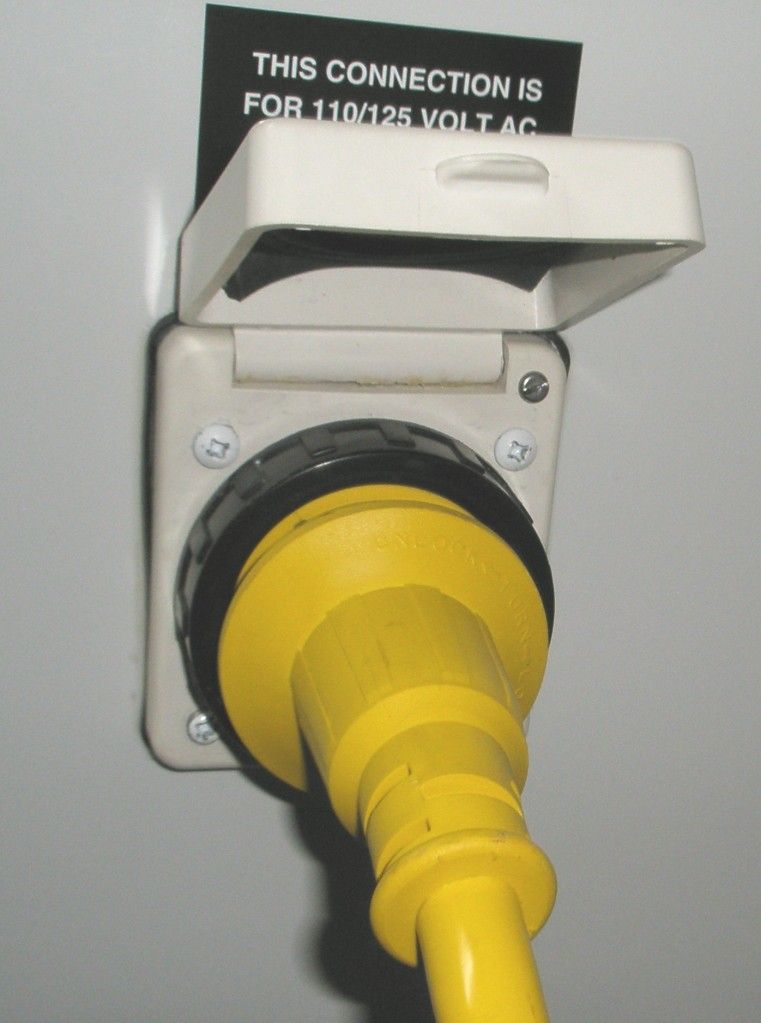DAS26miles wrote:
Any suggestions as to how to prevent water intrusion and possible shock?
Although some manufacturers wire their trailers with a main service detachable power kit neither of my previous two trailers had one so one of the first mods I did with each was to install a weatherproof
Marinco Park Power version.

The far end of whatever cable I'm using of course terminates with a standard 30 amp male plug which plugs into the campsite 30 amp service and although it's not particularly weatherproof there's often a hinged lid of sorts over the receptacle that offers some level of moisture protection. Millions are in use and you can bet that if rain getting into this particular connection was a major issue we wouldn't be using them ... in other words, I don't worry about it at all. ;)
That leaves any interconnections between multiple lengths of cable which is where water getting into the connection
can be an issue, particularly if that connection happens to lie in a depression in the ground that later fills with rainwater. :E One should of course try to avoid allowing the connection to sit anywhere water could potentially collect by elevating / covering that connection with an inverted bucket, etc, but i instead chose to wire up my custom made 10 gauge, 30 amp extensions and dogbones using
Leviton WetGuard connectors.

We actively practice energy management when camping (e.g. turn off A/C if we want to use the microwave, etc) so our maximum current draw at any given time is always well within the ratings for these 15/20 amp versions of the WetGuard connectos but for those wanting at times to draw a full 30 amps the
Leviton WetGuard Series does offer 30 amp versions. The only catch may be that unlike the 15 amp versions which are commonly available at a reasonable price at big box stores like Home Depot, Lowes, etc, these 30 amp versions are more costly and usually only sold by outlets serving the electrical trades so you may have to search a bit to find them. That said, after 15 years of use without a single issue, I would give these Leviton WetGuard connectors a HUGE thumbs up and highly recommend them to anyone looking for weatherproof connectors suitable to RV use. :B


